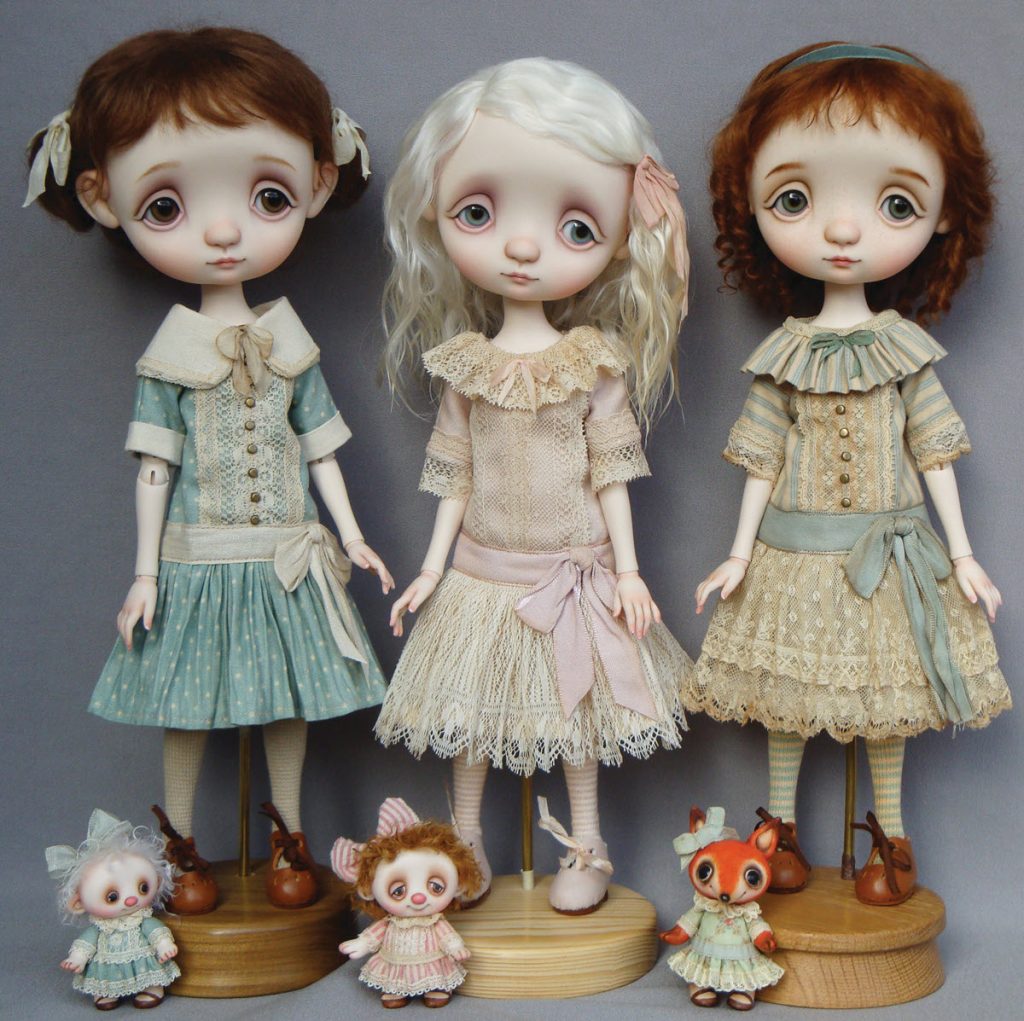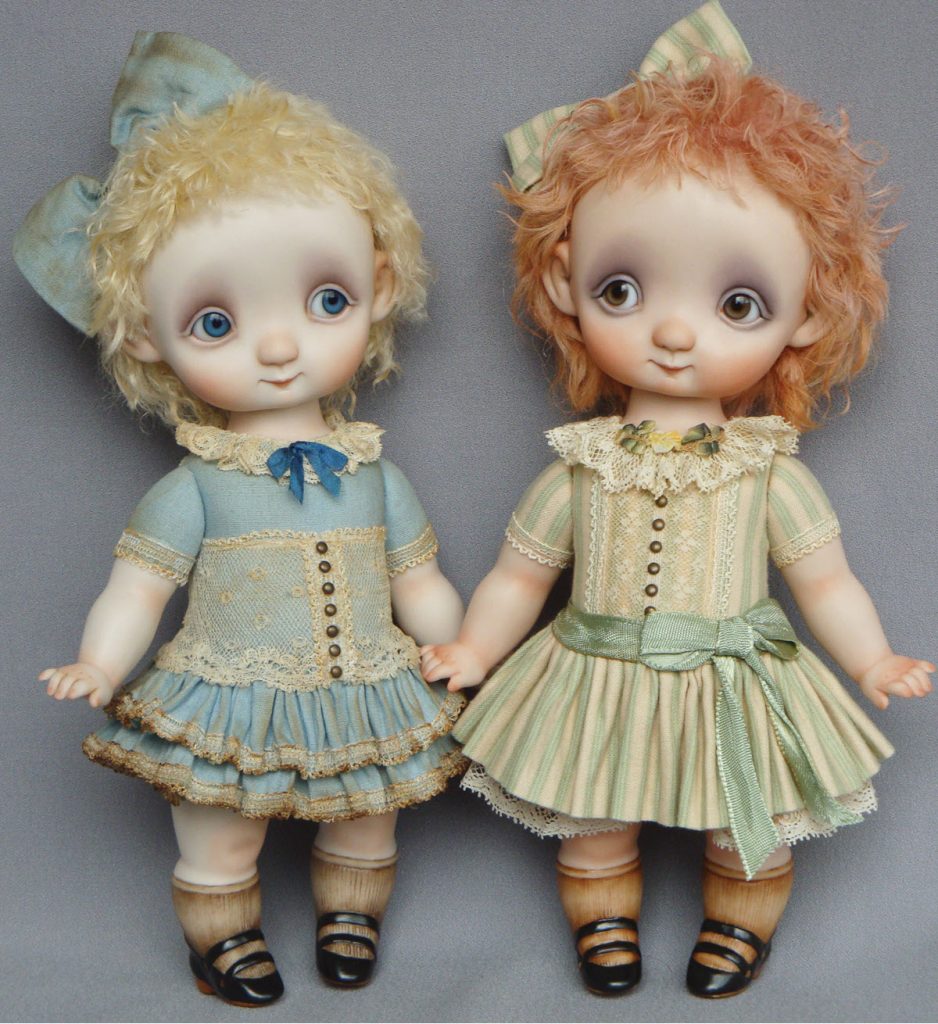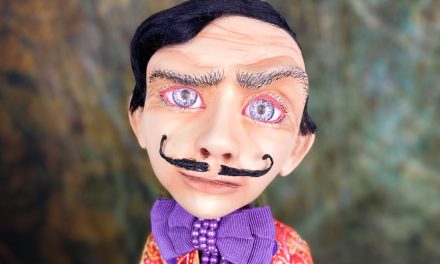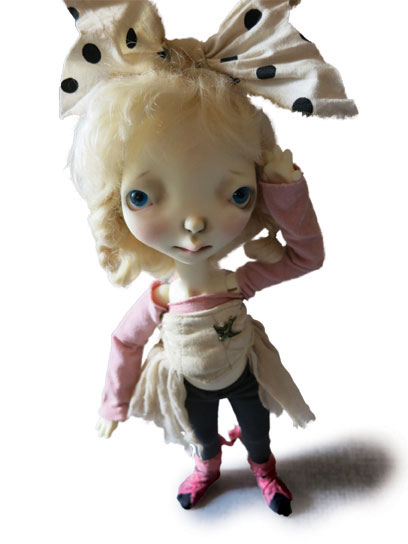
By Pam North
Portuguese artist Ana Salvador has always loved dolls and remembers playing with them for hours as a child, either alone or with her sister. “Dolls were my comfort every time I felt sad or alone,” she said, “but I never thought I’d ever make my own dolls. I was more interested in drawing and painting. I started making dolls after a trip to Helsinki, Finland’s capital, in 1999. There, I saw my first art dolls; they were like primitive fairies that could be hung on the wall. I thought they were beautiful and intriguing, and I really wanted to buy one, but they were too expensive for me at the time. I decided to make one for myself when I got home, and I have been addicted to making dolls ever since.”
Salvador studied communication design at the University of Algarve (Portugal) from 1995 to 1999. She said, “While this was a very computer-based course, it also had some art disciplines like anatomy, human body drawing and proportions, sculpture, and painting, which I actually use now for the creation of my art dolls.” She has been a professional doll artist since 2007 and is primarily self-taught, having learned by trial and error, watching tutorials online, asking for tips from other artists, and employing many hours of practice.

Prior to making dolls professionally, Salvador worked at an occupational center for people with mental illness. She was an art therapy teacher, focusing mainly on painting and drawing. She moved to the Netherlands in 2003 to be with the man she loves; they are married now and have a daughter who just turned 13 years old.
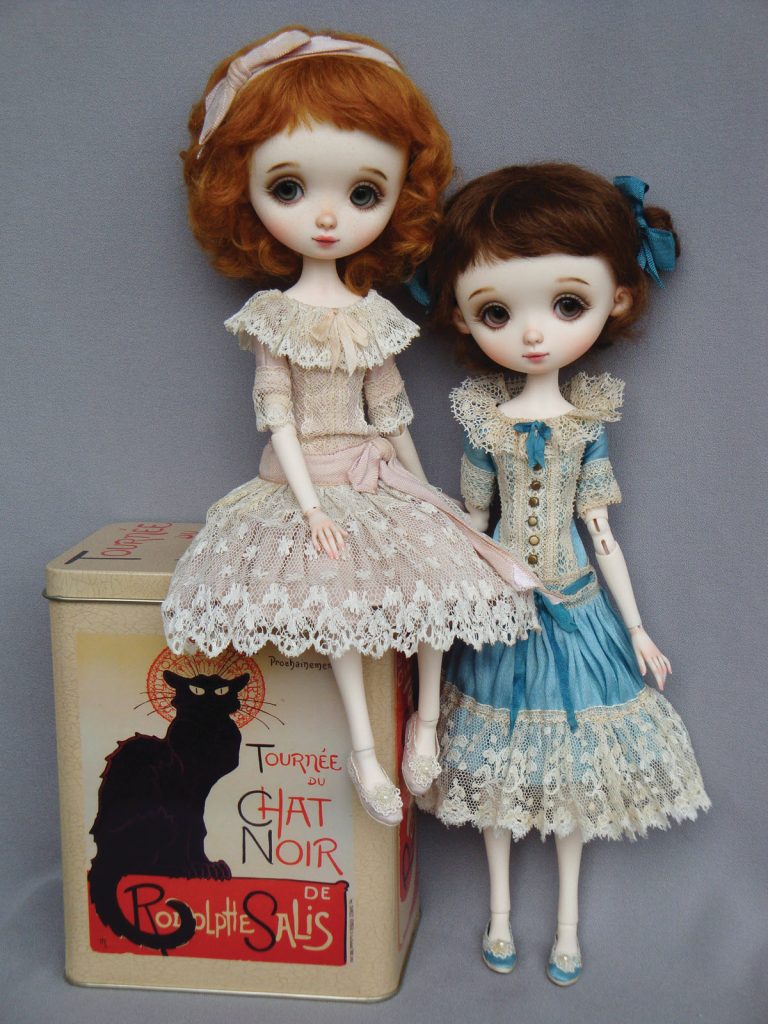
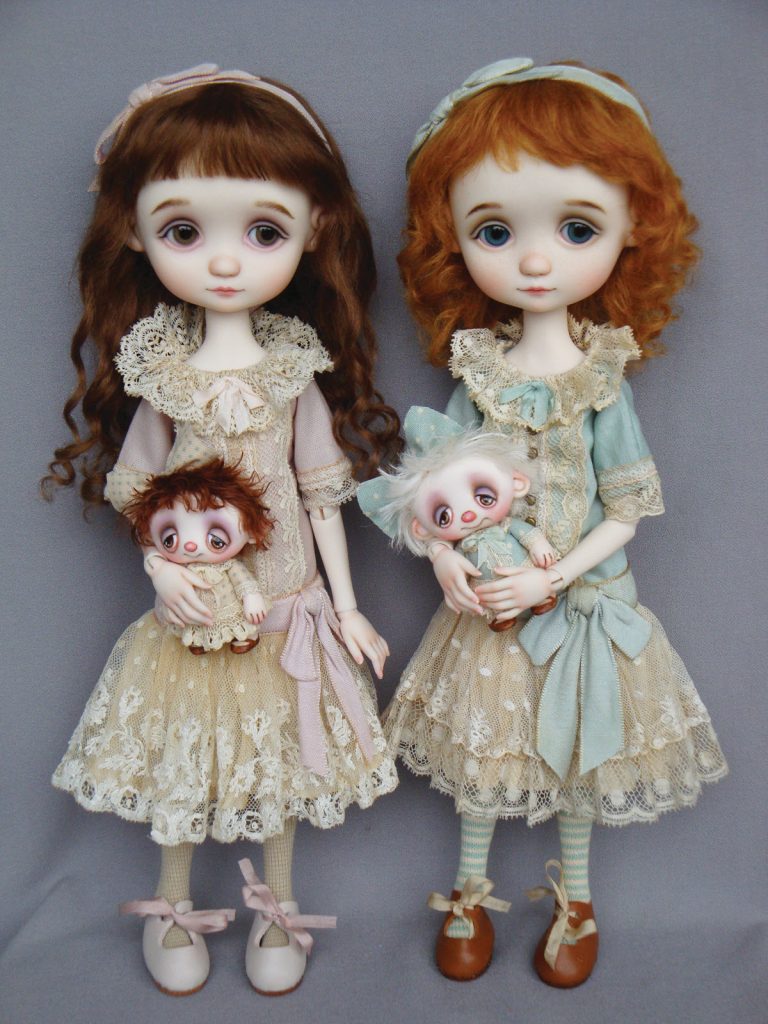
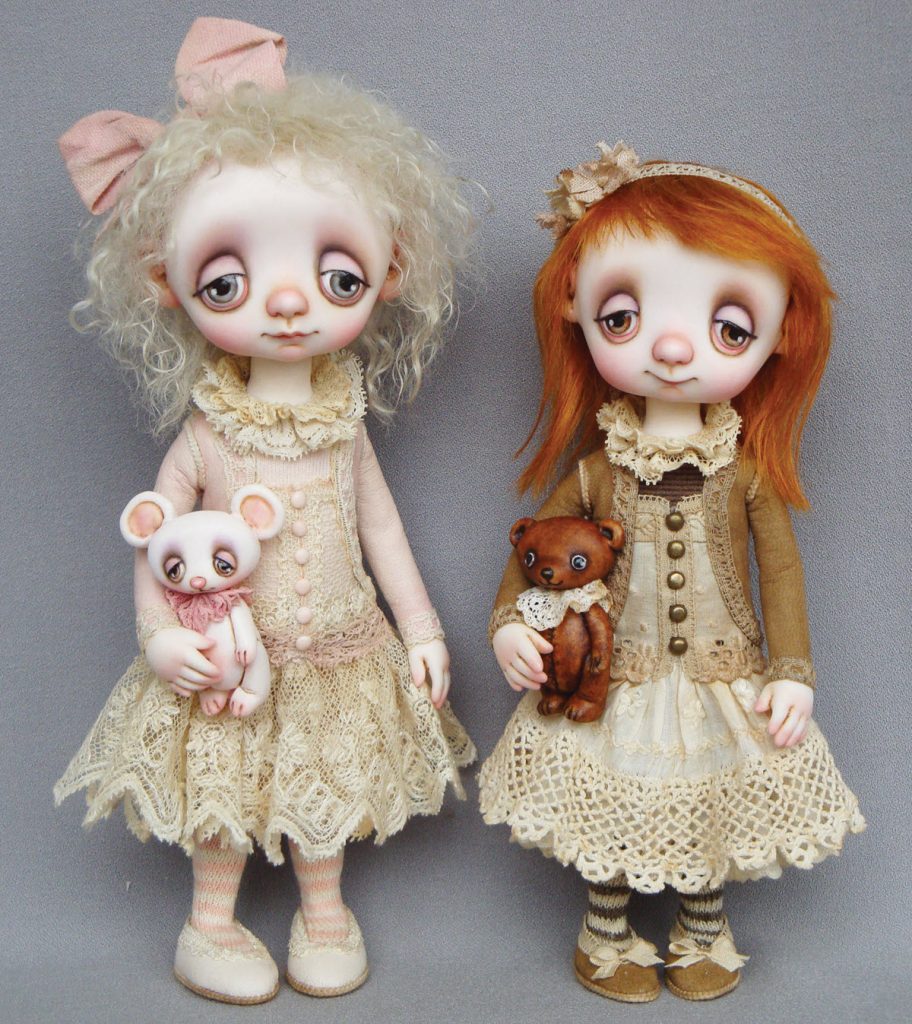
Multiple artists have influenced Salvador in her craft. “I started trying to improve my skills after I discovered the work of the late Hannie Sarris,” she said. “I was mesmerized with the beauty of her creations. Before that, I had no idea that dolls could be so beautiful. She was my first doll idol and inspiration. I was selected to enter the Dutch and Belgian Institute of Doll Artists (DABIDA), and Hannie Sarris was the group director, so I got to know her better. Another big influence who changed the way I think about dollmaking was Robert Tonner. I met Robert at the annual NIADA conference in 2012, when I was also accepted to be part of that group. He inspired me with his lecture to start producing my own resin BJDs. This was a big turning point in my career, since I could make more dolls for a broader public; before that, I was making static dolls in polymer clay but was also already making porcelain BJDs too. I started experimenting with mold-making and porcelain techniques in 2009. I made my first porcelain ball-jointed doll in 2010/2011, and my first BJD in resin came out in 2014/2015.”

At the very beginning of her dollmaking career, Salvador made dolls from air-drying white clay, but she soon switched to polymer clay, a cleaner and smoother medium. Now, her BJDs are made from porcelain and resin. She fashions their clothes with antique fabrics and laces that she finds in antique markets. “The porcelain dolls are made entirely by myself,” she said. “First, I sculpt the doll pieces in polymer clay; then I make the plaster molds for each piece. When the plaster has dried, I pour the porcelain in for the reproductions. After that, I clean, fire, and paint the porcelain. This is a very time-consuming process, which results in these dolls being priced higher. That is the reason I also have the more-affordable resin line. I make the prototype in porcelain, and I send it to a specialized factory where they make new molds of my prototype in which to pour the resin. I receive the resin dolls from the factory ready to paint and dress instead of making them all from scratch. I like to create every doll individually as a unique character, so even though they all came from the same mold, each is different. The most challenging part is to not fall into the same type of design, repeating it over and over, but instead be constantly innovative.” Her dolls range in size from a tiny 2 inches to a maximum of 18 inches, but she prefers working with the 12-inch size.

Salvador especially enjoys sculpting the faces for her dolls, but she also likes making doll clothes with interesting new fabrics and laces. “I like that this form of art involves so many different areas and mediums, and I can switch between sculpture, painting, hair styling, and dressmaking whenever I feel inspired.”
She has her own workspace (or atelier, as she calls it) in her home, and this is where she does her crafting. It’s filled with paintings and her personal doll collection. “I like to be surrounded by objects and images that inspire me,” she said, adding that she likes to collect dolls that show her something interesting. Whether it involves going through social media, looking at books, or surrounding herself with things she enjoys, inspiration is never far away for her. She sells her products through social media, namely Facebook and Instagram, and said, “I am lucky to have a group of supportive followers and longtime collectors.”
As for the future of artist-made collectibles, Salvador shared her view, saying, “My personal experience is that there are still a large number of collectors who appreciate artist dolls. In a world where everything is made for fast consumption, it is a special treat to own something made with love over many hours of work by an artist. Dolls also are enchanting and have fascinated humans almost since the beginning of our existence, so I don’t think that we will ever lose interest in them. I want to continue to be inspired to create new dolls that can give me and my collectors joy.”
